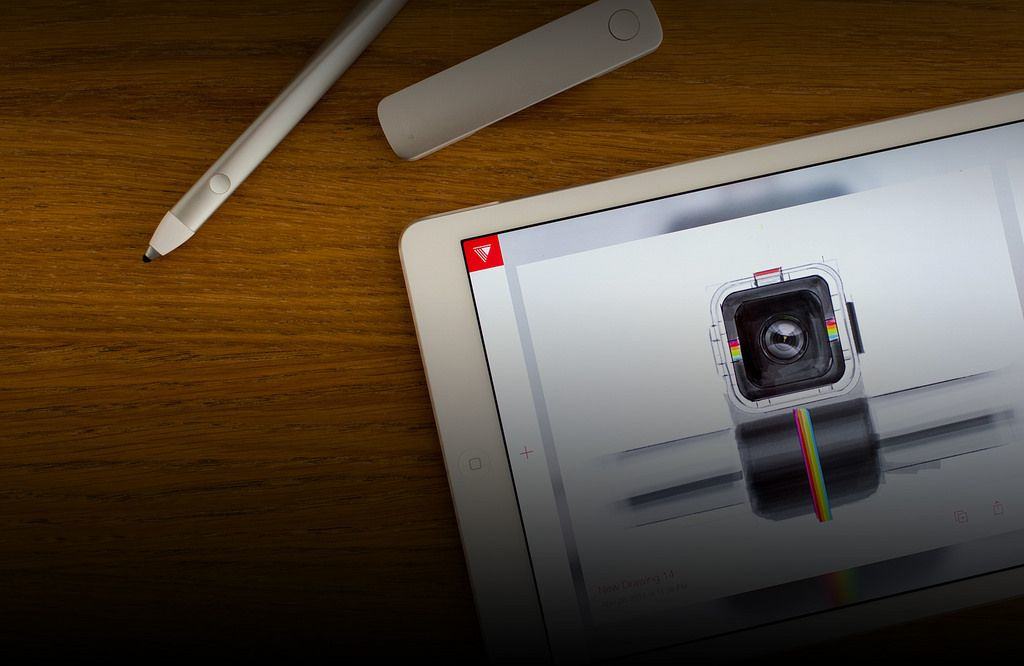I was all set to pull the trigger on Adobe’s Creative Cloud Photography plan, which gives subscribers access to Lightroom and Photoshop as well as Lightroom Mobile for the iPad and iPhone.
After all, it’s just $10 per month, right? (or €12.29/$16.71 in the EU). That’s about what I spend on Rdio, or Dropbox, and I get Lightroom on my frickin’ camera.
But I decided to hold off and see if one huge doozy of a design problem is fixed before my 30-day trial of the service finishes up. This will also give me time to check out the amazing new Adobe Photoshop Mix, which is what Photoshop for iPad should have been all along.
And the little problem that could be a deal-breaker? You’re gonna love it…
The new plan
Adobe’s Creative Cloud Photography plan has been in a kind of limbo status for a while. At first the $10-per-month subscription fee seemed like a sop to photographers to stop them from complaining about the full $50-per-month Creative Cloud plan that offers access to a whole bunch of Adobe apps a photographer doesn’t need.
Now the $10 photo plan is officially official. For your $10 you’ll get Lightroom and Photoshop on the desktop, plus access to Lightroom Mobile, allowing you to sync as many photos as you want to your iPad and iPhone via Adobe’s fast and reliable cloud.
That’s pretty neat – if you look at it one way, you’ll see that you’re paying $120 per year for two powerful programs that used to cost more than that alone (if you bought every update, and they came out every 12 to 18 months).
But that’s not all. Because your Lightroom photos are now stored on Adobe’s servers (what’s stored is actually Smart Previews of those pictures), you can access them from other Adobe apps. Previously the mobile apps only gave access to pictures stored locally on your device, or pictures you’d saved into the Creative Cloud itself. Now there’s a new entry in the photo picker for Lightroom Photos.
You’ll see how cool this is when we take a look at the brand new iPad app, Photoshop Mix. But first…
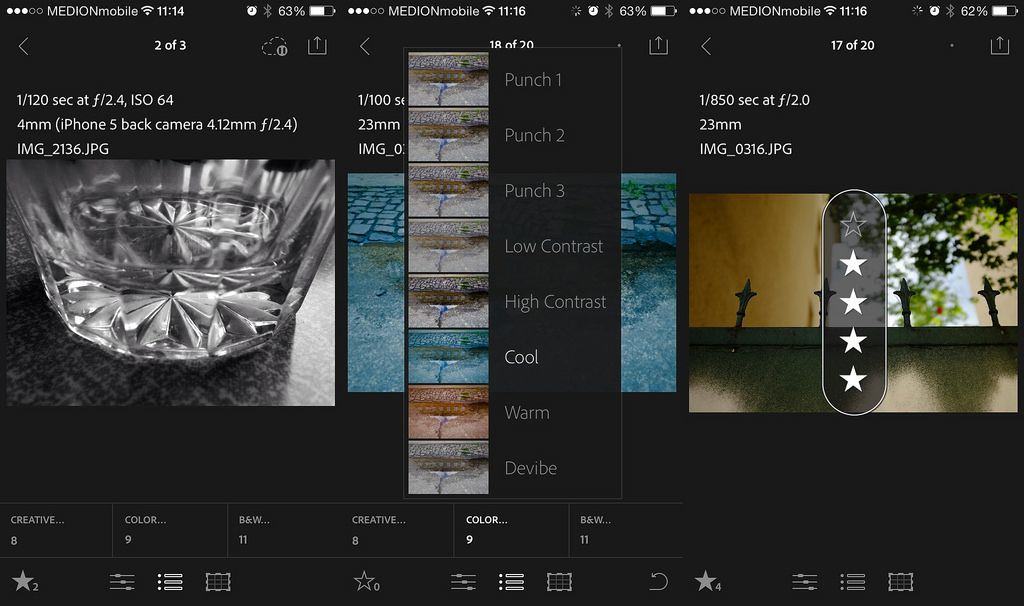
Lightroom for iPhone
Lightroom Mobile for the iPhone is pretty much a shrunken version of Lightroom for the iPad, and offers all the same features, built around the same RAW rendering engine found in the Mac and PC versions of the app. An update to both now lets you add star ratings to pictures, and to view albums in custom sort orders.
But the biggest part of this is that, as filmmaker/photographer Stu Maschwitz says, “This is Lightroom running on your camera.”
The default setting is for Lightroom to automatically add all your iPhone photos to your Lightroom library, which means they end up on your Mac and your iPad too. This is a foretaste of the iCloud Photo Albums coming in iOS 8 and OS X Yosemite, with all your photos and their edits available instantly on all devices. Only in this case you get to use Lightroom to edit those pictures.
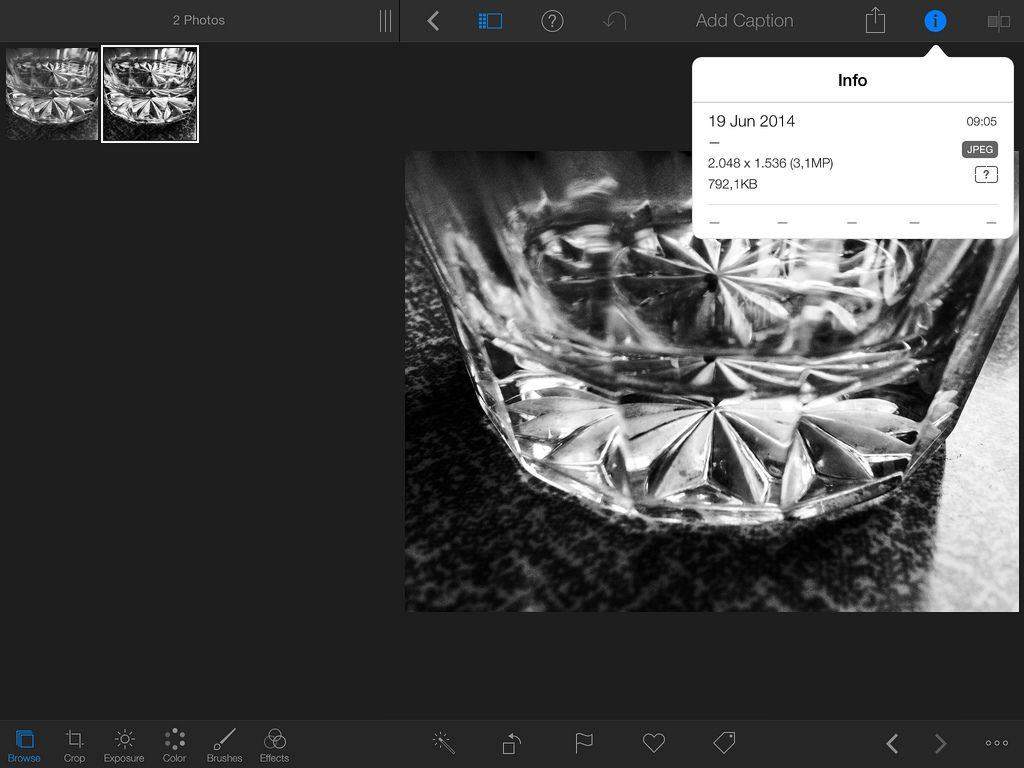
I’m super-excited about this, and hoping that Adobe fixes up the big flaw in the mix so far: metadata. If you share a photo from Lightroom Mobile, the metadata is stripped, including location data. As Maschwitz says, this flaw “represents a fundamental misunderstanding of mobile photography.”
I don’t think it’s that bad, but it is a pain. Happily, the data isn’t actually stripped out – if you hop over to the desktop, you’ll see everything is intact, including location data. What’s happening is that Lightroom processes the metadata on the desktop machine and then shares it back to mobile. You’ll see this if you import photos into your iPad using the camera connection kit. The metadata doesn’t fully show up until you’ve launched the app on your Mac and let things sync.
Sadly, the location/metadata is lost on export for all photos, not just those taken with the iPhone.
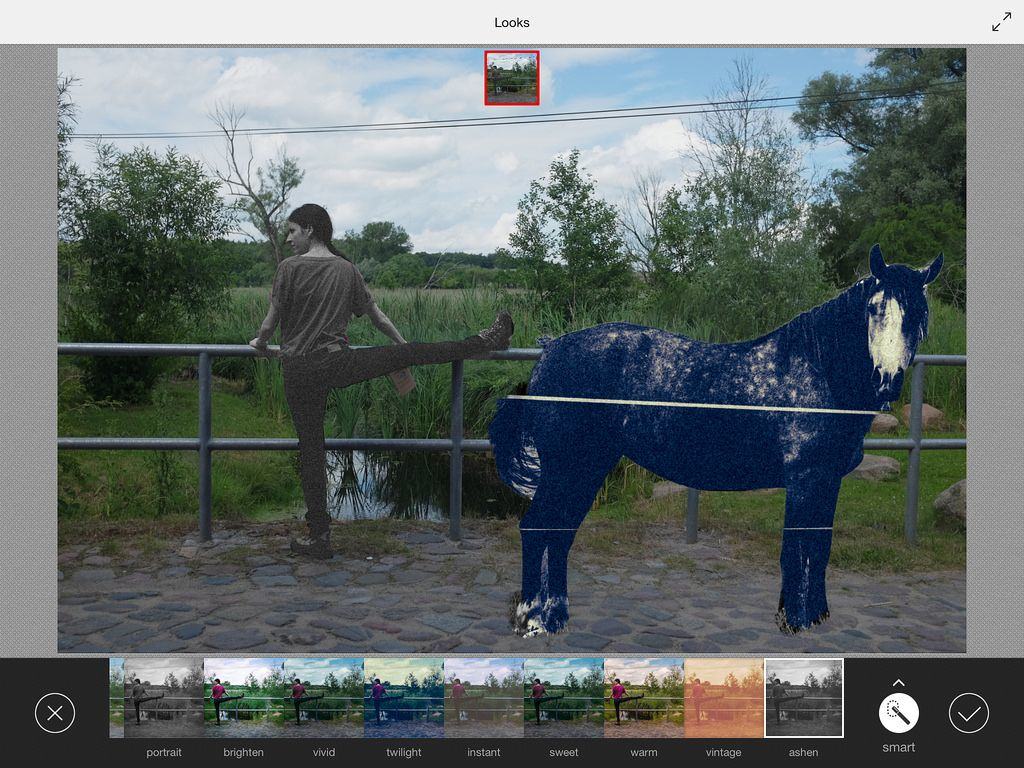
Photoshop Mix
Lightroom on the iPhone is amazing, but Photoshop Mix, the new iPad app, is fantastic. It too uses the Lightroom rendering engine, but is a layers-based image editor like Photoshop. The idea seems to be that you can have a little fun with your pictures, and you can. In fact, Mix seems more like a proof-of-concept app for the Creative Cloud platform than a proper app.
You can add layers from various sources – your Creative Cloud, your Lightroom Mobile library or your Camera Roll – and then add filters and/or cut out elements. Thus you can switch backgrounds, or selectively apply all kinds of neat filters, as well as the usual cropping and image-tweaking tools.
Photoshop Mix seems more like a proof-of-concept than a proper app.
The edits seem to be lossless and rendered in real time. That is, when you open up the app and reload something you did already, you first see the untouched layers before the app renders your edits. This lets you export the results out to desktop Photoshop and keep tweaking them.
The main tool (apart from the filters) is Adobe’s Smart Selection tool, which lets you select parts of an image just by tapping on them (and then refine the result by painting around the edges). Once you’ve made a selection, you can clip it from the background (or delete it, leaving the background), or apply a filter to just that selection.
Mix also adds three tools that use the processing power of the Creative Cloud servers to do their work: Upright, Shake Reduction and Content-Aware Fill. These all work like their Photoshop versions, but the app sends your image data up to the servers to do the heavy lifting. It can take a while, though.
So you see, Photoshop Mix is a great app but it seems to be a mix of different ideas, all brought together to test. Not that I’m complaining. It’s a lot of fun to use, and it’s free.
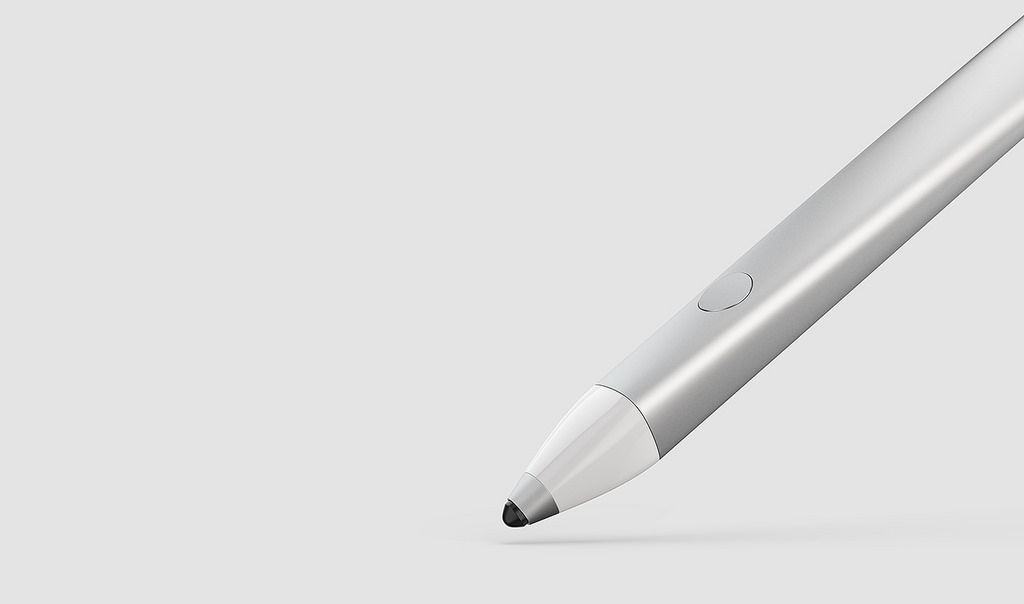
New hardware – a pen and a ruler
There is a lot more in Adobe’s Creative Cloud announcement, including new features in the desktop app, but to finish off today we’ll look at the new hardware. Adobe now makes its own iPad stylus and … ruler?
Called Ink and Slide, the new peripherals pair with two new companion apps, Sketch and Line. Ink is a Bluetooth stylus; Slide is a ruler with no connection to the iPad – it communicates via touch, just like your fingers.
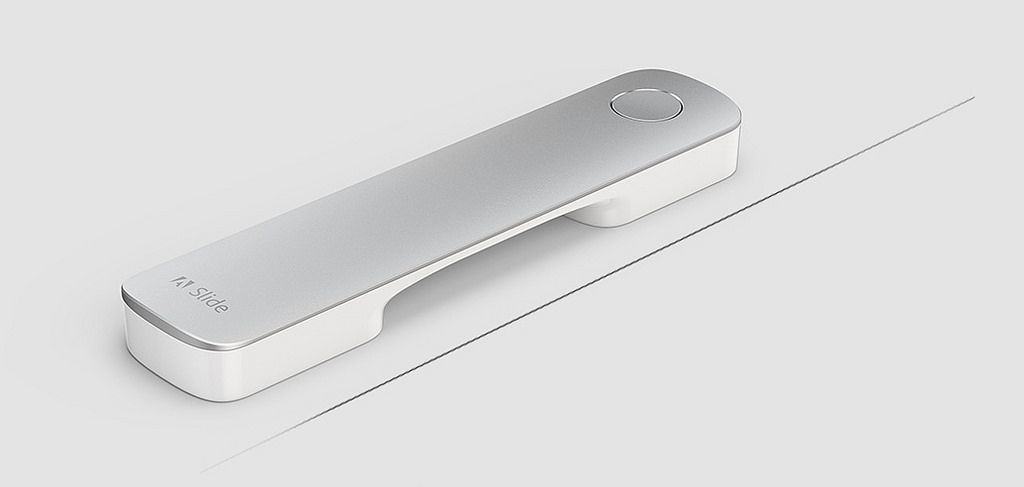
Ink works with the Sketch app, and is a lot like the Paper app from FiftyThree, only it’s connected with the Creative Cloud. This lets you do some neat things, like pressing the button on the side to copy something from one iPad and paste it onto another. That is clearly quite useless, but what about a color-mixing app on the iPhone paired with a painting app on the iPad? Or two iPads working together like two screens on a Mac?
The Slide seems less useful. It lets you draw lines, and curves, and other shapes, just by laying it on the iPad screen. Maybe it’s just in the box to justify the $200 price tag of the Ink and Slide set? I guess I’ll find out when I try it.
Conclusion
Adobe seems to be hitting its stride in mobile. Lightroom is flat-out awesome (despite the metadata glitch), and the whole Creative Cloud strategy is coming together so nicely that even John “Hannibal” Smith would be happy. With one subscription, you get a whole raft of apps that work together, plus online storage of your pictures.
Between this and Apple’s hopped-up iCloud offering, this seems to be the year the cloud will finally get truly useful. And not with Google’s old-fashioned, browser-based idea of the cloud, but with fast, powerful, native apps seamlessly connected by the Internet.
